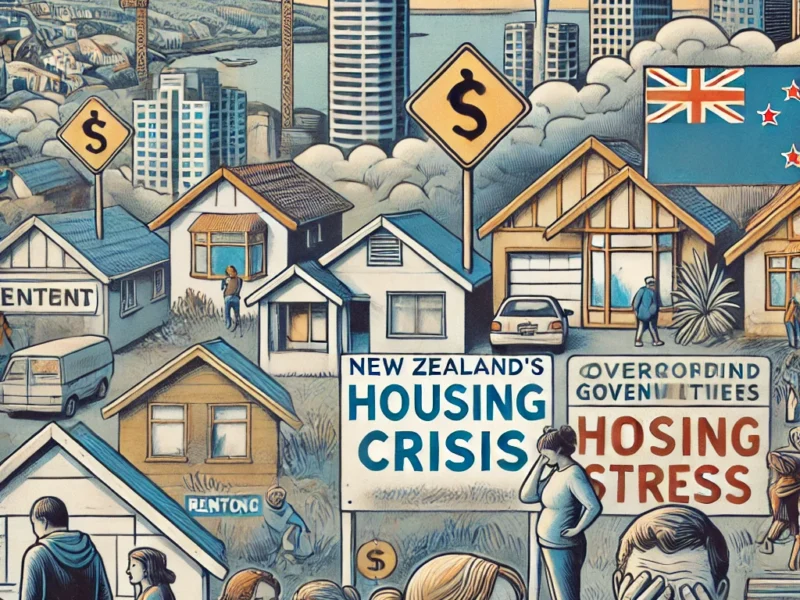New Zealand, often celebrated for its stunning landscapes and high quality of life, is currently grappling with a cost of living crisis that has left many households struggling to make ends meet. The rapid rise in inflation, coupled with stagnant wage growth, has intensified financial pressure on everyday New Zealanders. This article delves into the causes of the cost of living crisis, its impact on various aspects of life, and the government’s response to mitigate the challenges faced by citizens.
Understanding the Cost of Living Crisis
The cost of living refers to the amount of money needed to sustain a certain standard of living, covering essential expenses such as housing, food, transportation, healthcare, and utilities. In New Zealand, the cost of living has been steadily increasing over the past few years, with inflation rates outpacing wage growth. As a result, many New Zealanders are finding it increasingly difficult to afford the basic necessities.
The Role of Inflation
Inflation is one of the primary drivers behind the rising cost of living. Over the past year, New Zealand has witnessed an inflation surge, with the Consumer Price Index (CPI) reaching its highest levels in decades. Several factors have contributed to this inflationary pressure:
- Global Supply Chain Disruptions: The COVID-19 pandemic has caused significant disruptions to global supply chains, leading to shortages of goods and increased production costs. These higher costs are passed on to consumers in the form of higher prices.
- Rising Energy Costs: The global energy crisis, driven by geopolitical tensions and reduced supply, has resulted in skyrocketing fuel prices. This increase has had a ripple effect across the economy, as higher transportation and production costs lead to more expensive goods and services.
- Housing Market Pressures: New Zealand’s housing market has been a key contributor to the cost of living crisis. The demand for housing far exceeds supply, driving up property prices and rents to unsustainable levels. As housing costs consume a larger portion of household budgets, families have less disposable income for other essential expenses.
- Food Price Inflation: The cost of food has also seen a significant rise, driven by factors such as adverse weather conditions affecting crop yields, increased transportation costs, and global supply chain issues. Staples such as dairy, meat, and vegetables have become more expensive, straining household budgets further.
The Impact on New Zealanders
The cost of living crisis has far-reaching consequences for New Zealanders, affecting various aspects of daily life. Some of the most significant impacts include:
- Housing Affordability: For many, owning a home has become an unattainable dream. The skyrocketing property prices have pushed homeownership out of reach for many middle and low-income families. Those renting are not faring much better, with rental costs rising sharply, particularly in urban centers like Auckland and Wellington. The housing crisis has also exacerbated social inequalities, with wealthier individuals and investors benefiting from rising property values, while those less well-off struggle to find affordable housing.
- Increased Financial Stress: The pressure of meeting rising living costs has led to increased financial stress for many households. The situation is particularly dire for those on fixed incomes, such as retirees and beneficiaries, who find their purchasing power eroded by inflation. Families are forced to make difficult decisions, often cutting back on non-essential items or seeking additional employment to make ends meet.
- Food Insecurity: As food prices continue to rise, more New Zealanders are experiencing food insecurity. Many families are unable to afford nutritious meals, leading to a reliance on cheaper, less healthy food options or food banks. This has long-term implications for public health, particularly for children, who may face developmental challenges due to poor nutrition.
- Social and Mental Health Impacts: The financial strain caused by the cost of living crisis is taking a toll on mental health and social well-being. Anxiety, depression, and stress are on the rise as people struggle to cope with the uncertainty of their financial futures. The increased pressure also places strain on relationships, leading to a rise in domestic issues and contributing to a growing sense of social instability.
Government Response to the Crisis
Recognizing the severity of the situation, the New Zealand government has introduced several measures aimed at alleviating the burden of rising living costs. These include:
- Increased Social Support: The government has increased support for low-income families and beneficiaries through various programs, including increases in benefits, targeted financial assistance, and subsidies for essential services such as healthcare and education. These measures are designed to provide a safety net for the most vulnerable members of society.
- Housing Initiatives: To address the housing affordability crisis, the government has implemented policies aimed at increasing the supply of affordable housing. This includes accelerating the construction of public housing, implementing stricter regulations on property speculation, and providing financial incentives for first-time homebuyers. While these measures are a step in the right direction, the impact on housing prices and availability will take time to materialize.
- Regulation of Essential Goods: The government is also exploring regulatory measures to control the prices of essential goods and services. This includes monitoring and regulating fuel prices, as well as working with supermarkets and food suppliers to ensure fair pricing. While these efforts may help to curb the worst effects of inflation, they are not a long-term solution to the underlying economic challenges.
- Economic Stimulus and Job Creation: In an effort to boost economic growth and create jobs, the government has introduced various stimulus measures. These include infrastructure projects, investments in technology and innovation, and support for small businesses. By creating more job opportunities and increasing wages, the government hopes to improve the financial resilience of New Zealanders.
What Lies Ahead?
The cost of living crisis in New Zealand is a complex and multifaceted issue that will require a sustained and coordinated effort to address. While the government’s interventions provide some relief, they are not a panacea for the deeper structural challenges facing the economy.
Long-term solutions will need to focus on fostering economic resilience, addressing income inequality, and ensuring that the benefits of economic growth are shared more equitably across society. This will require a holistic approach, involving not just government action, but also collaboration with businesses, communities, and individuals.
For now, New Zealanders will need to navigate the challenges posed by rising living costs with resilience and adaptability. As the nation grapples with these economic realities, it will be crucial to continue the conversation around sustainable solutions that ensure a high quality of life for all.


